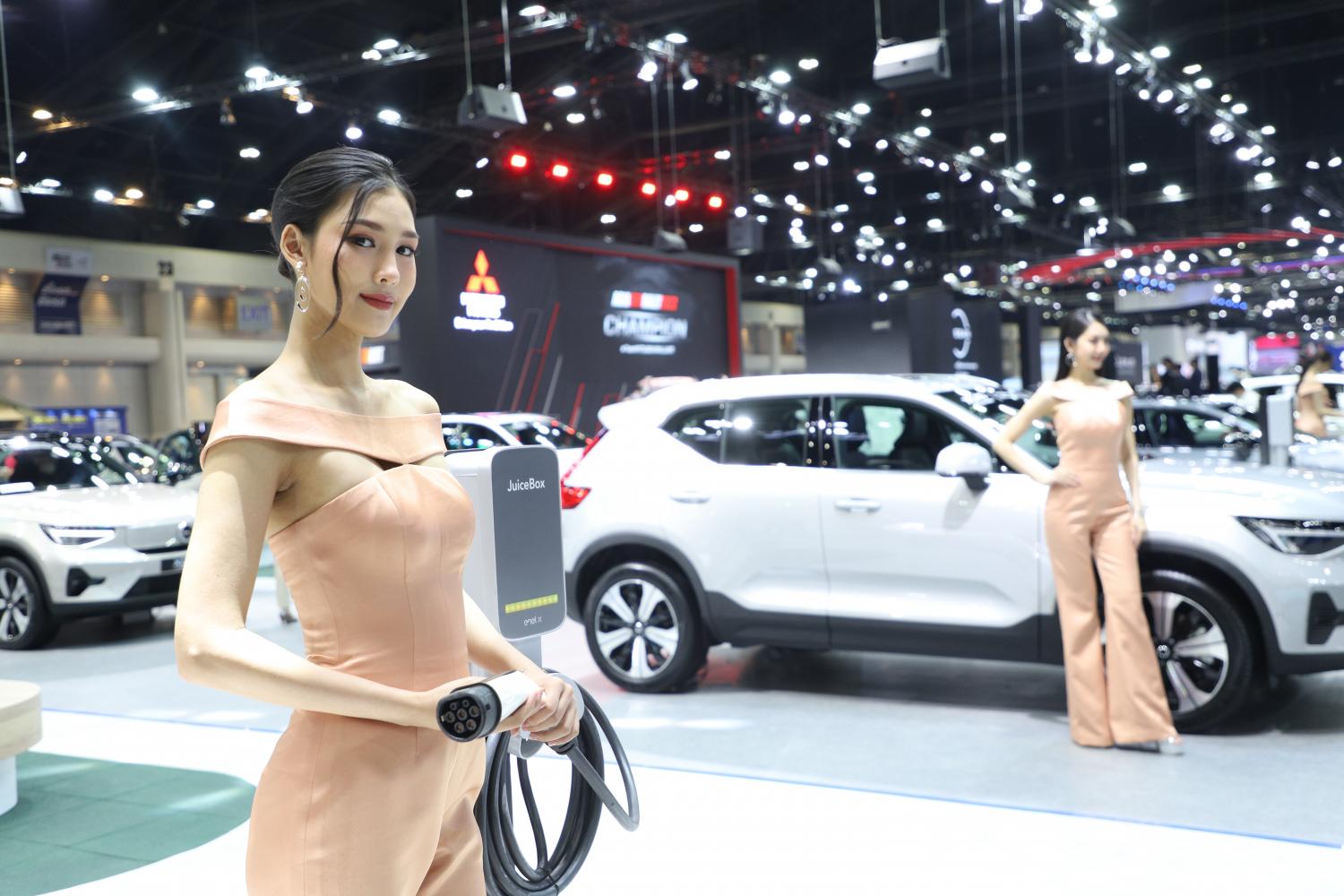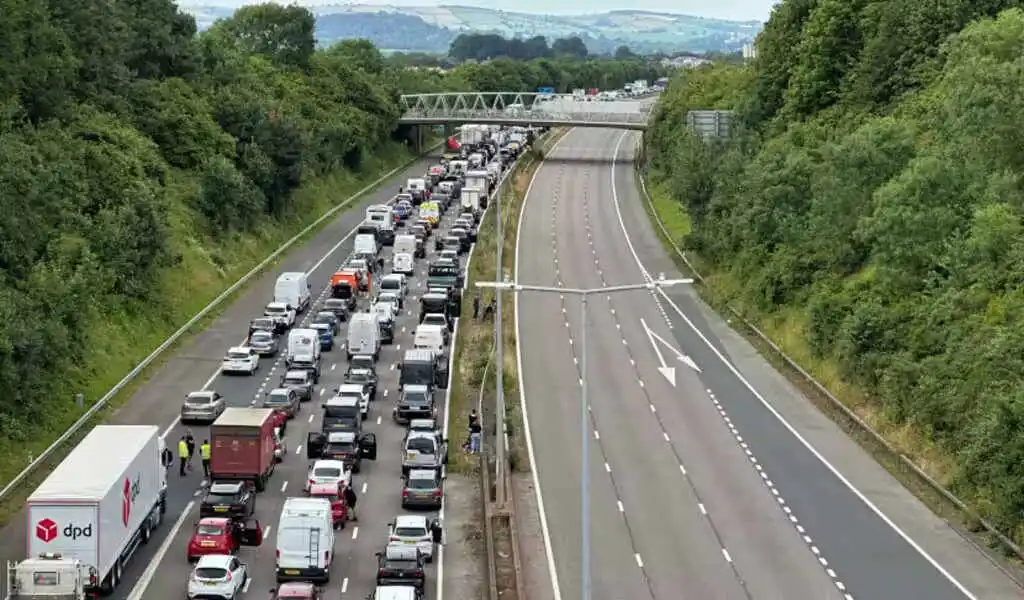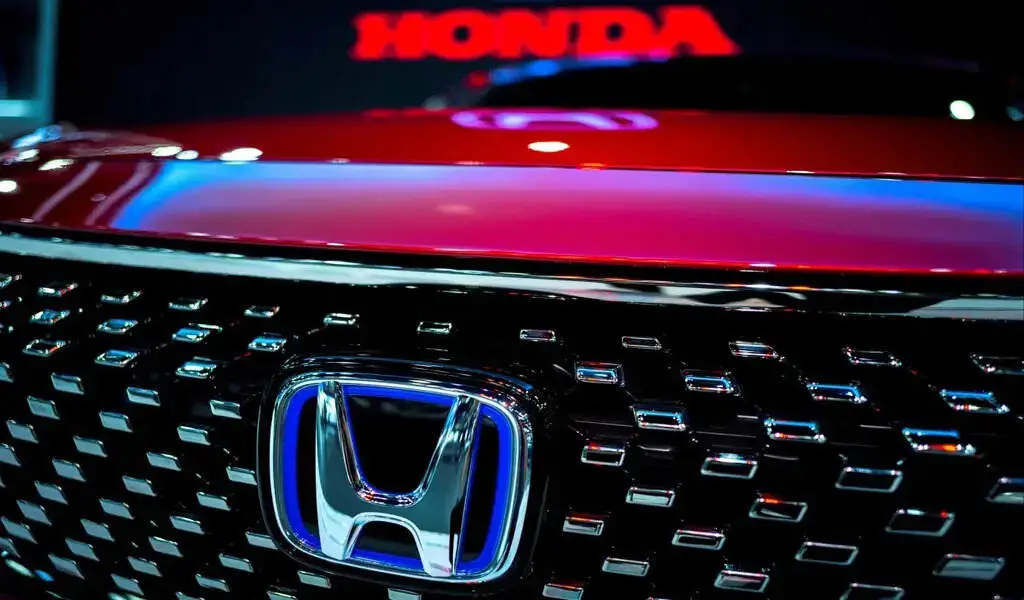Automotive
The Impact of Electric Vehicles on Auto Transportation: Navigating New Challenges and Opportunities

The surge in electric vehicles (EVs) adoption represents a significant shift in the automotive landscape, signaling a move towards sustainability and innovation. However, this transition also poses unique challenges and opportunities for the auto transport industry. As we delve deeper into the implications of this shift, it becomes evident that the rise of EVs is reshaping the very fabric of vehicle transportation, from operational logistics to environmental considerations.
The Weight Issue and Its Implications
One of the most immediate challenges faced by the auto transport sector is the increased weight of electric vehicles, primarily due to their batteries. EVs are substantially heavier than their internal combustion engine (ICE) counterparts, which has a cascading effect on transportation logistics.
Heavier vehicles mean fewer units can be transported per trip, directly impacting the efficiency and cost-effectiveness of transport operations. Moreover, the added weight increases fuel consumption for transporters, paradoxically raising the carbon footprint of transporting low-emission vehicles. If you need to ship a car, it is advisable to use an auto transport company that specializes in transporting EVs such as Speedy Car Shipping.
Specialized Handling and Infrastructure Needs
Electric vehicles demand specialized handling and infrastructure during transportation. The risk of battery damage, which can lead to significant safety and financial implications, requires transporters to adopt new protocols and training for their staff.
Furthermore, the need for charging infrastructure during transit introduces additional complexities. Transporters must plan routes that allow for charging stops, considering the relatively sparse and uneven distribution of fast-charging stations across regions. This requirement not only extends transit times but also necessitates investments in mobile charging solutions or partnerships with charging network providers.
Regulatory and Insurance Considerations
The transportation of EVs also brings forth new regulatory and insurance considerations. As governments worldwide push for stricter emissions standards and incentivize EV adoption, transport companies must navigate a rapidly evolving regulatory landscape.
This includes compliance with regulations regarding the transport of lithium-ion batteries, which are classified as hazardous materials. Insurance products, too, are adapting, with premiums and policies reflecting the higher value and specific risks associated with EVs. Transport companies must stay abreast of these changes to ensure compliance and protect their operations against liabilities.
Opportunities for Innovation and Growth
Despite these challenges, the rise of EVs presents significant opportunities for innovation and growth within the auto transport industry. For instance, the development of EV-specific transport solutions, such as lightweight carriers and advanced battery management systems during transit, can mitigate some of the challenges posed by the increased weight and need for charging.
Additionally, the shift towards electric vehicles opens new markets for transport companies, especially as manufacturers and dealerships look to expand their EV offerings nationally and internationally.
Environmental Impact and Sustainability Efforts
The transition to electric vehicles aligns with broader sustainability efforts, a priority that the auto transport industry can capitalize on. By adopting greener practices, such as using low-emission transport vehicles or optimizing routes for efficiency, companies can reduce their environmental impact.
Furthermore, engaging in carbon offset programs or investing in renewable energy for charging infrastructure can enhance a company’s sustainability profile, appealing to environmentally conscious consumers and stakeholders.
Preparing for the Future
As the automotive world continues its march towards electrification, the auto transport industry must adapt to thrive. This entails investing in specialized training for staff, exploring new technologies for safe and efficient transport, and closely monitoring regulatory developments. Collaboration among automakers, transport companies, and government agencies will be crucial in addressing the infrastructure gaps and regulatory challenges.
Moreover, embracing sustainability and adopting environmentally friendly practices will not only help mitigate the environmental impact of transport operations but also position companies as leaders in a rapidly evolving market.
The rise of electric vehicles is not just a trend; it’s a pivotal shift towards a more sustainable and innovative automotive ecosystem. The auto transport industry, by navigating these new challenges and seizing the opportunities they present, can play a pivotal role in shaping the future of mobility.
Conclusion
The impact of electric vehicles on the auto transport industry encapsulates the broader challenges and opportunities of transitioning to a more sustainable future.
While the increased weight, specialized handling requirements, and evolving regulatory landscape pose significant challenges, they also spur innovation and growth. By adapting to these changes and embracing sustainability, the auto transport sector can ensure its relevance and success in the electrified future of automotive transportation.
As we move forward, the industry’s ability to navigate these waters will be instrumental in the global shift towards sustainable mobility, marking an exciting chapter in the annals of automotive history.
Automotive
Russell’s early departure leaves Lando Norris on pole at the Hungarian F1 GP.

(CTN News) – Lando Norris and his McLaren squad survived a tough qualifying session for the Hungarian Grand Prix, but they know they must perform on Sunday.
Lando Norris needed to win Budapest after Oscar Piastri locked off the top row in the field’s fastest McLaren. Recent races have been costly owing to wasted opportunities and little mistakes.
He matched Max Verstappen’s pole lap at the Hungaroring, who was unhappy to finish third. In a confident and aggressive approach, the 24-year-old finished more than three tenths ahead of the Dutchman, hitting the apexes.
Piastri followed Lando Norris by two hundredths of a second on the second hot run, demonstrating McLaren’s speed.
McLaren is doing well since Lando Norris won the Miami Grand Prix.
His potential triumphs have been cost by team and driver error, for which both parties have taken responsibility. On Sunday, he and McLaren will know they must do well.
Norris was quietly pleased with his historic first pole in Hungary and third overall. Although confident, McLaren will also be proud of their recent race progress. No one has won the pole in Budapest since Lewis Hamilton won the race and flag in 2012.
Norris and his crew recognize they must capitalize on closing gaps with 12 races left to drive Verstappen to the finish. Lando Norris understands. Behind Verstappen by 84 championship points.
“I know we missed out on some races, but we did the best we could in every one of them, and I don’t want to get back into all that stuff,” he said. I expect Oscar and Max to challenge me in the rear, not a clean weekend.
“Every location and point must be maximized; the more we can do to return to Max and Red Bull, the better.”
Hungary is a great opportunity since Lando Norris Verstappen was plainly unhappy with his car and outperformed. This disappointed him twice because the team had swiftly upgraded this race.
Verstappen had stated that the upgrades will define the second half of the season, but he admitted that he did not think they had gone far enough and could not defeat the McLarens.
“The changes are effective, but we still need more as we are not at the top,” said he. “Despite the imbalance, I liked the laps. I was pushing hard, so you had these little moments. Fast lap times are less crucial today. Simple: we need to work more because we’re moving slower. McLaren’s qualifying performance suggests a lot of ground to cover.
Lando Norris completed his best lap despite two crash-related stoppages.
Verstappen looked great in dry Q3 hot laps. He set a record with a lap time of 1 minute, 15.555 seconds and was quickest through each sector.
Lando Norris followed and pushed through the corners with fearlessness, posting a perfect 1:15.227 lap time. Piastri improved to second place on the penultimate laps while Verstappen did not, and Yuki Tsunoda’s crash halted the session.
A tardy coda didn’t matter when practice resumed because the last two minutes on old tires were worthless. McLaren has all the cards, but they must perform at the highest level to prove the legendary brand can win again.
Carlos Sainz of Ferrari was fourth and Lewis Hamilton of Mercedes fifth. George Russell, Sainz’s teammate, was unexpectedly ousted in the first round.
Sergio Pérez of Red Bull struggled again in the first qualifying round. He hit the curb, lost the rear at turn eight, and crashed, interrupting the session.
Poor performance again for the Mexican, whose Red Bull berth is in risk after a succession of poor performances, especially in qualification. His contract, recently extended to 2025, may have a performance clause, and Red Bull is unlikely to tolerate him underperforming for long. He was sixteen.
Russell fell behind because Lando Norris Mercedes didn’t fuel the car until the session ended. The British driver was eliminated in 17th place after staying out when the track dried after the break.
Charles Leclerc of Ferrari placed sixth, Fernando Alonso and Lance Stroll of Aston Martin placed seventh and eighth, Daniel Ricciardo of RB placed nine, and Tsunoda placed tenth.
Nico Hülkenberg and Kevin Magnussen of Haas finished 11 and 15, Valtteri Bottas of Sauber 12 and Alex Albon and Logan Sargeant of Williams 13 and 14. Esteban Ocon and Pierre Gasly placed ninth and twentieth for Alpine, while Guanyu Zhou placed eighth for Sauber.
SOURCE: GN
SEE ALSO:
Based on interest from The Range, Homebase’s owner plans to initiate a sale.
Inflation slowed in July, which will lead to 150 bps policy rate cuts, JS Global says.
Police in Chiang Rai Launch Crackdown on Cyber Criminals in Golden Triangle
Automotive
M5 Partially Closed as Cullompton-Exeter Crash Hospitalizes Two

(CTN News) – Two people were sent to the hospital for treatment as a result of the M5 tragic vehicle accident that happened in Devon.
The accident between two vehicles was the cause of the disaster. One more consequence of the crash is that it has left the M5 partially blocked to traffic to this day.
Between junction 28 for Cullompton and junction 29 for Exeter, the highway was blocked in both directions; however, one lane on the southbound carriageway has been opened up for previously closed traffic.
In a statement issued by the South Western Ambulance Service NHS Foundation Trust, they stated that they were notified of a traffic accident that had happened in the Exeter district at 2:29 p.m. on Friday, July 12.
M5 happened in Exeter, according to reports.
Furthermore, information was given to them by the South Western Ambulance Service.
To provide medical assistance to those injured, four land ambulances, each with two crews, an air ambulance, a critical care M5 vehicle, a doctor, an operations officer, and a responding officer were dispatched to the scene of the incident.
Furthermore, a critical care vehicle was dispatched. We also dispatched an air ambulance to the scene of the event.
Two patients were transported to their respective hospitals: one was transported by land ambulance to the Royal Devon and Exeter Hospital, while the second patient was flown there by air ambulance.
After being moved, the two patients were sent to hospitals in Devon and Exeter, respectively. Simultaneously, both patients were transferred to their respective sites at the same time.
Here’s what Devon and Somerset M5 Fire and Rescue Service said:
“We responded to the scene of a road traffic collision on the M5 at 2.30 p.m. today, between junctions 28 and 29.” The statement cited above was part of an official declaration.
A car that had been hit by another car coming from the other direction had two persons inside that had been rescued. It had been traveling in the other direction.
We offered support as the people were being taken out of the car. These people are now receiving medical assistance from the ambulance service in order to fulfill their duties.
The event caused significant delays for the M5 and the routes that pass through Exeter during the period when traffic was being redirected. In order to accommodate the traffic, this was being done.
A southbound vehicle experienced wheel failure, causing it to cross the center reserve and merge with the northbound road approaching. The car was going the wrong way, which is why this happened. The vehicle was traveling southward at that precise moment.
National Highways indicated that based on the facts they have provided, it is expected that the police would begin their investigation into the occurrence given the magnitude of the calamity that occurred. The entity that made this information public was National Highways.
The Devon and Cornwall Police Department issued the following statement:
“We know the M5 closure is causing traffic.”
The statement that was released is located beneath you. “We will get people moving safely when we can but please bear with us while we deal with the incident and causalities at the scene.”
In order to accommodate cars and other small vehicles that were traveling on the now-closed northern route towards M5 Taunton and Bristol, the back of the line has been shifted.
This was done to create space for these cars, which were heading towards Taunton and Bristol. The purpose of this activity was to provide space for larger cars. At this point, it seems like more and more vehicles are being stopped from going forward.
Due to this incident, a second lane has been opened up for use by any and all vehicles traveling southward.
SOURCE: ITV
SEE ALSO:
Honda to Cease Production at One of its Thailand Auto Factories
Car Dealers in Northern Thailand Struggling to Stay Afloat
BYD Car Buyers in Thailand Outraged Over Huge Dealer Discounts
Automotive
Honda to Cease Production at One of its Thailand Auto Factories

(CTN News) – The Japanese vehicle firm Honda Motor made the news in a statement that was posted on Tuesday. The statement stated that the company intends to center its production at the site that it operates in the province of Prachinburi.
As a consequence of this, the production of automobiles will be halted at the facility that it operates in the province of Ayutthaya in Thailand by the year 2025.
The more difficult circumstances that the second-largest car manufacturer in Japan is facing in the country of Thailand, which is located in Eastern Southeast Asia, are exemplified by this move. Thailand is located in Southeast Asia.
There are several reasons for this, including the fact that Chinese firms are determined to grow their market share in Thailand, and a growing number of consumers are expressing an interest in electric vehicles (EVs). They both play a role in contributing to the problem.
The combined output of automobiles produced by Honda’s two facilities has fallen throughout the course of the succeeding four years, going from 228,000 vehicles in 2019 to less than 150,000 vehicles annually. This downward trend has occurred during the course of the past four years.
The preceding four years have been the time period during which this decline has taken place. With regard to the sales that the company has made in Thailand throughout the course of the past four years, there has been a consistent range of less than 100,000 to less than 100,000 for the entirety of this time period.
This is according to Honda’s spokeswoman.
When the factory first opened its doors in 1996, the company anticipates that it would continue to manufacture vehicle components at that location. When the firm finishes manufacturing vehicles at the Ayutthaya facility in the next year, the spokesperson stated that the company intends to continue producing automobile components at the plant.
In accordance with the statement that was given by the spokesman, the Prachinburi factory, which was built in 2016, will be utilized for the purpose of integrating the facilities with which automobiles are created. This was said in the statement. There are only two factories in Thailand that are owned and operated by the vehicle manufacturer, and these two factories are the only ones in the country.
According to the statement made by a spokeswoman for Honda in Thailand, the company’s goal is to reduce the disparity between the number of automobiles it produces and the number of sales it has experienced in the nation.
According to the remark that was made by the spokesman for the company, the automobile manufacturer are already exporting their products from Thailand, particularly to other Southeast Asian countries such as Indonesia and the Philippines. According to a statement that was sent by a spokeswoman for the company.
Currently, Honda has no plans to invest in Thailand.
When it comes to mainland China, Honda and Nissan Motor, a Japanese automobile manufacturer that competes with Honda, have been hit particularly hard by competition from rising Chinese manufacturers.
Nissan Motor is a competitor of Honda. As a result of the fact that these businesses provide reasonably priced plug-in hybrids and electric vehicles that are loaded with software, a significant number of customers have been drawn to them.
Now, Japanese automobile manufacturers are at risk of losing clients in countries outside of China, such as those in Southeast Asia, to Chinese companies that are increasingly attempting to increase the quantity of automobiles they export and build up operations outside of China.
As a result, Honda Japanese automobile manufacturers are facing a potential loss of customers. They are exposed to this danger as a result of the fact that Japanese brands compete with Chinese brands in these locations.
BYD, a Chinese manufacturer of electric vehicles, recently launched a plant in Thailand that will be responsible for the production of automobiles that are powered by electronic batteries.
This plant was established last week. The Chinese electric car manufacturers are beginning to establish facilities in the country, and this factory is a component of the wave of investments that they are making in the country. These investments have a total value that is greater than 1.44 billion dollars together.
SOURCE |SCMP
SEE ALSO:
Car Dealers in Northern Thailand Struggling to Stay Afloat
BYD Car Buyers in Thailand Outraged Over Huge Dealer Discounts
The PM Seeks Assurances after BYD’s Steep EV Discounting in Thailand Sparked Backlash
-

 News3 years ago
News3 years agoLet’s Know About Ultra High Net Worth Individual
-
Entertainment2 years ago
Mabelle Prior: The Voice of Hope, Resilience, and Diversity Inspiring Generations
-

 Health3 years ago
Health3 years agoHow Much Ivermectin Should You Take?
-

 Tech2 years ago
Tech2 years agoTop Forex Brokers of 2023: Reviews and Analysis for Successful Trading
-

 Lifestyles2 years ago
Lifestyles2 years agoAries Soulmate Signs
-

 Movies2 years ago
Movies2 years agoWhat Should I Do If Disney Plus Keeps Logging Me Out of TV?
-

 Health3 years ago
Health3 years agoCan I Buy Ivermectin Without A Prescription in the USA?
-

 Learning2 years ago
Learning2 years agoVirtual Numbers: What Are They For?






